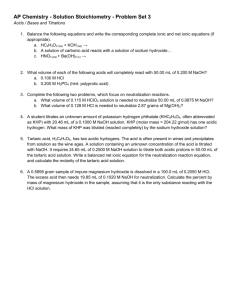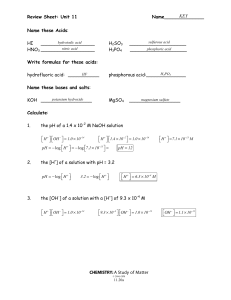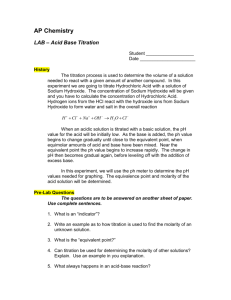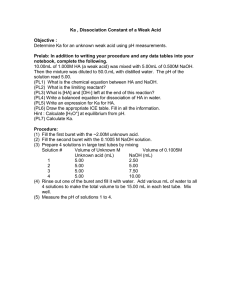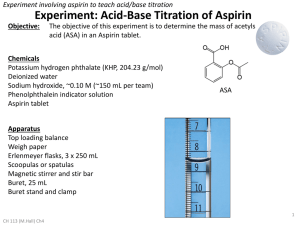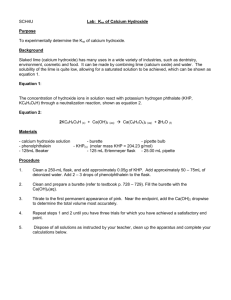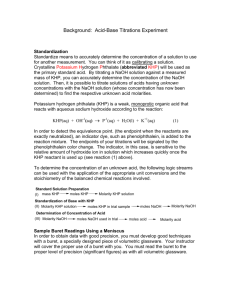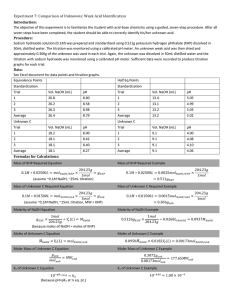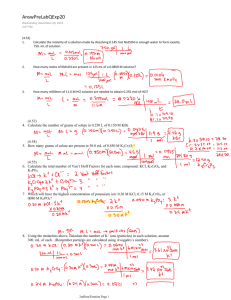TYPES OF SOLUTION CHEMICAL REACTIONS
advertisement
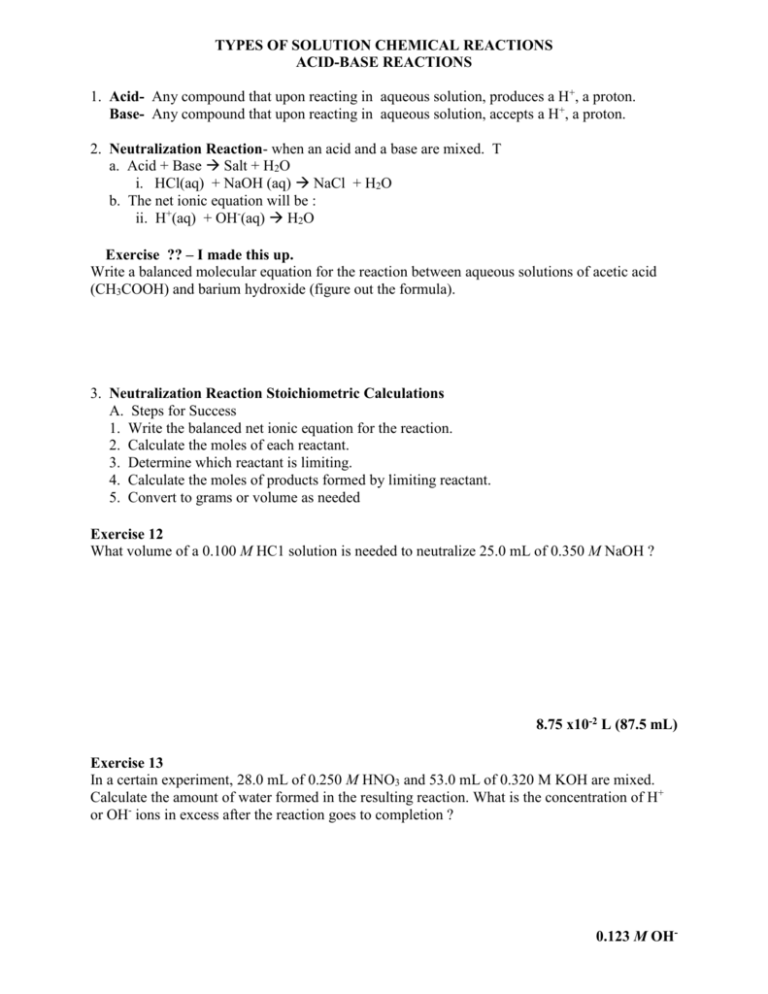
TYPES OF SOLUTION CHEMICAL REACTIONS ACID-BASE REACTIONS 1. Acid- Any compound that upon reacting in aqueous solution, produces a H+, a proton. Base- Any compound that upon reacting in aqueous solution, accepts a H+, a proton. 2. Neutralization Reaction- when an acid and a base are mixed. T a. Acid + Base Salt + H2O i. HCl(aq) + NaOH (aq) NaCl + H2O b. The net ionic equation will be : ii. H+(aq) + OH-(aq) H2O Exercise ?? – I made this up. Write a balanced molecular equation for the reaction between aqueous solutions of acetic acid (CH3COOH) and barium hydroxide (figure out the formula). 3. Neutralization Reaction Stoichiometric Calculations A. Steps for Success 1. Write the balanced net ionic equation for the reaction. 2. Calculate the moles of each reactant. 3. Determine which reactant is limiting. 4. Calculate the moles of products formed by limiting reactant. 5. Convert to grams or volume as needed Exercise 12 What volume of a 0.100 M HC1 solution is needed to neutralize 25.0 mL of 0.350 M NaOH ? 8.75 x10-2 L (87.5 mL) Exercise 13 In a certain experiment, 28.0 mL of 0.250 M HNO3 and 53.0 mL of 0.320 M KOH are mixed. Calculate the amount of water formed in the resulting reaction. What is the concentration of H+ or OH- ions in excess after the reaction goes to completion ? 0.123 M OH- 4. Acid-Base Titrations a. Volumetric analysis—a technique for determining the amount of a certain substance by doing a titration (controlled mixing) between an acid and a base. b. titrant—the standard solution of known concentration whose volume is accurately delivered from a buret. c. analyte—the substance being analyzed; with a known formula, mass or volumed. indicator- a substance added at the beginning of a titration that changes colors. 5. Procedure for titration a. A standard solution of an acid or base is loaded into a buret. b. The unknown solution of known volume is placed in an Erlenmeyer flask below the buret. c. An indicator is added to the unknown. d. Small amounts of the standard solution is added until the endpoint is reached and a color change occurs. 6. Terms: a. endpoint- the point (volume of standard) at which the unknown changes color b. equivalence point--# moles of standard solution = # moles of unknown solution. c. standardize- titration the unknown solution with the standard of known concentration. Exercise 14 A student carries out an experiment to standardize (determine the exact concentration of) a sodium hydroxide solution. To do this the student weighs out a 1.3009-g sample of potassium hydrogen phthalate (KHC8H4O4, often abbreviated KHP). KHP (molar mass 204.22 g/mol) has one acidic hydrogen. The student dissolves the KHP in distilled water, adds phenolphthalein as an indicator, and titrates the resulting solution with the sodium hydroxide solution to the phenolphthalein endpoint. The difference between the final and initial buret readings indicates that 41.20 mL of the sodium hydroxide solution is required to react exactly with the 1.3009 g KHP. Calculate the concentration of the sodium hydroxide solution. 0.1546 M Exercise 15 An environmental chemist analyzed the effluent (the released waste material) from an industrial process known to produce the compounds carbon tetrachloride (CC14) and benzoic acid (HC7H5O2), a weak acid that has one acidic hydrogen atom per molecule. A sample of this effluent weighing 0.3518 g was shaken with water, and the resulting aqueous solution required 10.59 mL of 0.1546 M NaOH for neutralization. Calculate the mass percent of HC7H5O2 in the original sample.

